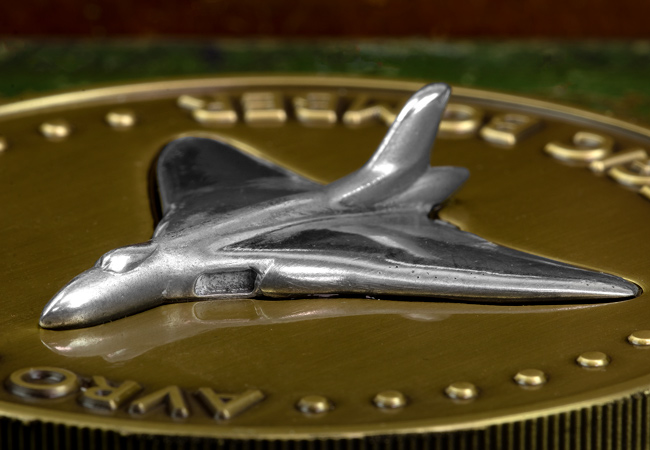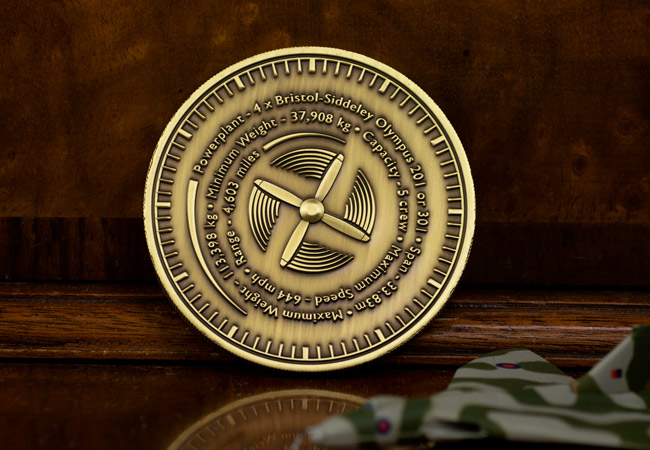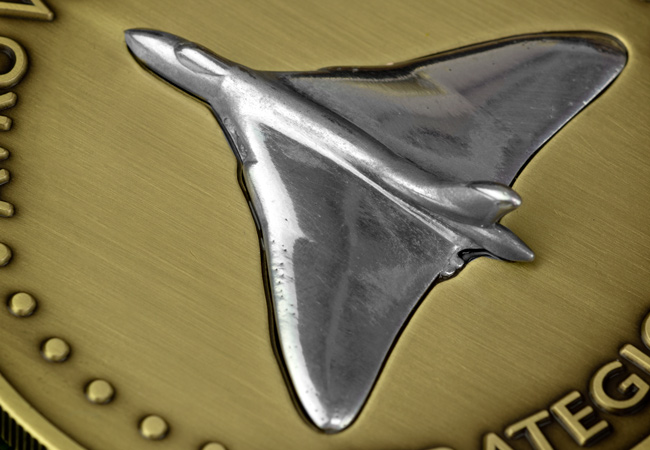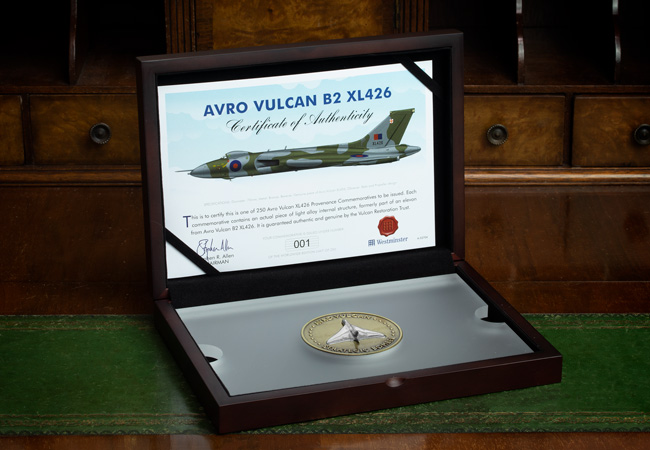Posts Tagged ‘provenance medals’
Honouring a legendary war hero — NEW Commemoratives issued to mark the 40th Anniversary of the Douglas Bader Foundation
This year marks 40 years since the founding of the Douglas Bader Foundation. To celebrate the occasion a range of NEW commemoratives have been issued in partnership with the charity. But, before I go into any details about these new issues, I want to tell you about the fascinating life of the foundation’s namesake – Group Captain Sir Douglas Bader.
Sir Douglas Bader
Douglas Bader was born in London in 1910 and was commissioned into the Royal Air Force in 1930. Tragically, 18 months later he was in a plane crash in which he lost both legs.
Due to this accident, he was discharged from the RAF and was forced to find work elsewhere.
However, after the outbreak of the Second World War, Bader was able to rejoin the air force. He became a leading airman during WW2, flying Spitfires and Hurricanes at Dunkirk and the Battle of Britain. In 1941, he was shot down and held as a prisoner of war.
During his descent, Bader lost his right artificial limb. He persuaded his German captors to radio England to ask them to send over a replacement leg. On the night of 19 August 1941, during a normal bombing raid, his new leg was dropped from a Blenheim, along with some stump socks, tobacco, and chocolate.
Despite his disability, he made several escape attempts. Bader was eventually placed in Colditz until its liberation in 1945.
Douglas Bader was a charismatic and controversial character. After the war, he campaigned tirelessly on behalf of amputees and people with disabilities. He inspired millions with his example and was honoured with a knighthood in 1976. He is considered a national hero for both his war efforts and his work with the disabled which he was involved in up until he died in 1982.
The Douglas Bader Foundation
The Douglas Bader Foundation was established immediately following his death in 1982 by his friends and family, many of whom had flown by his side during the war.
For 40 years, the Douglas Bader Foundation has worked to help people with disabilities, supplying prosthetics, grants, and support to many people.
To support this fantastic charity, a donation from the sale of each of the brand-new commemoratives will go directly to the Douglas Bader Foundation.
So, let’s take a closer look at the new range ….
The Silver Spitfire Commemoratives
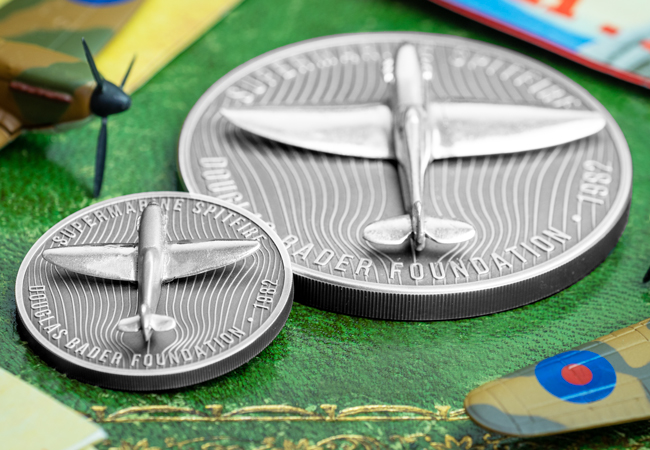
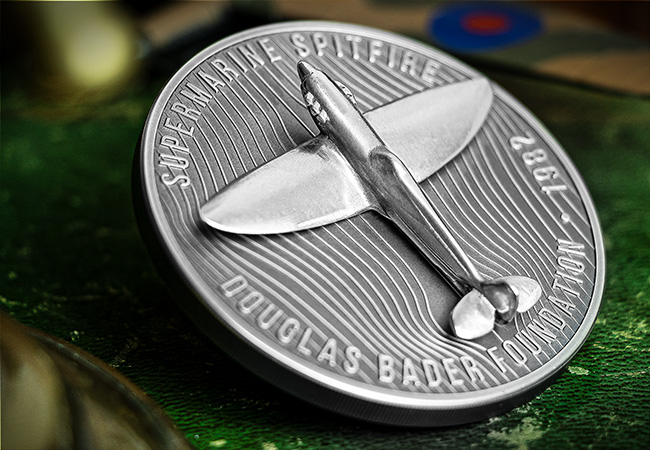
These incredible Silver Spitfire commemoratives feature a 3D Spitfire model crafted from a genuine piece of aluminium from a Spitfire AB910.
AB910 flew in The Dieppe Raid – one of the most significant air battles in history and flew cover patrols over Normandy beachheads on D-Day.
I can’t think of a more fitting tribute to Douglas Bader and the Douglas Bader Foundation. The daring airman flew Spitfires over Dunkirk and during the Battle of Britain.
These are available in both 1oz and 5oz silver specifications. With a small amount of this historic metal available, just a limited number of these commemoratives can be made.
Click here for more details and to secure your 1oz today >>
Click here for more details and to secure your 5oz today >>
Douglas Bader Medal Box Set
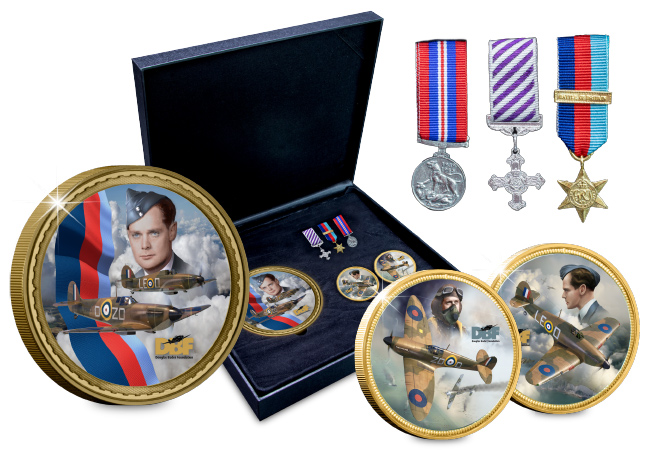
Strictly limited to JUST 250 worldwide, a spectacular box set has been released to honour the extraordinary life of Douglas Bader. This set brings together not one, but three full-coloured commemoratives designed by artist Adam Tooby.
Alongside these commemoratives also sits replicas of three of the many medals that Bader received during his astonishing military career.
As this set comes beautifully displayed in a presentation box with a numbered certificate of authenticity, it is the perfect collector’s piece.
The Avro Vulcan – the national treasure of our skies
The Avro Vulcan is one of the most distinctive planes that graced our skies after World War 2, and during its time in active service with the RAF, became a national treasure that is still remembered and well loved to this day.
The Vulcan was considered to be the most technologically advanced plane of its time, and was fundamental in helping to improve our understanding of advanced aerodynamics – and some technologies used in the Avro Vulcan were later incorporated into the design of Concorde.
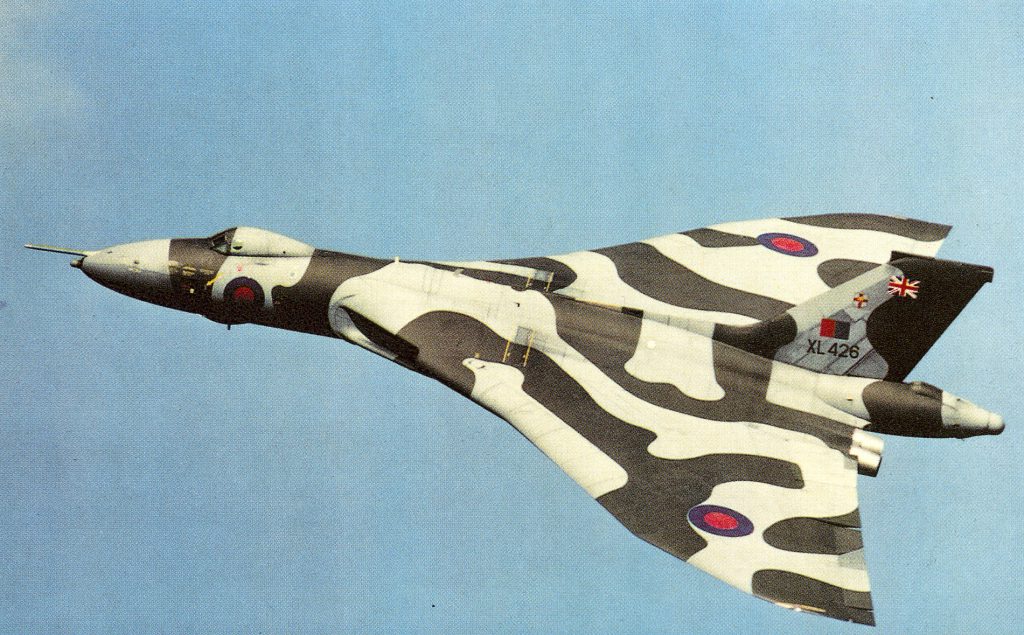
The Vulcan first became a part of the RAF in 1956, but it wasn’t until 1960 that the improved Vulcan B2 entered active service. The Vulcan B2 had several improved features over the B1, including more powerful engines, a larger wingspan, and an improved electrical system.
Although most Avro Vulcan’s were retired from active service, a few still exist today for air display purposes, or in the case of the Avro Vulcan XL426, are kept in taxiable condition for ground runs and events.
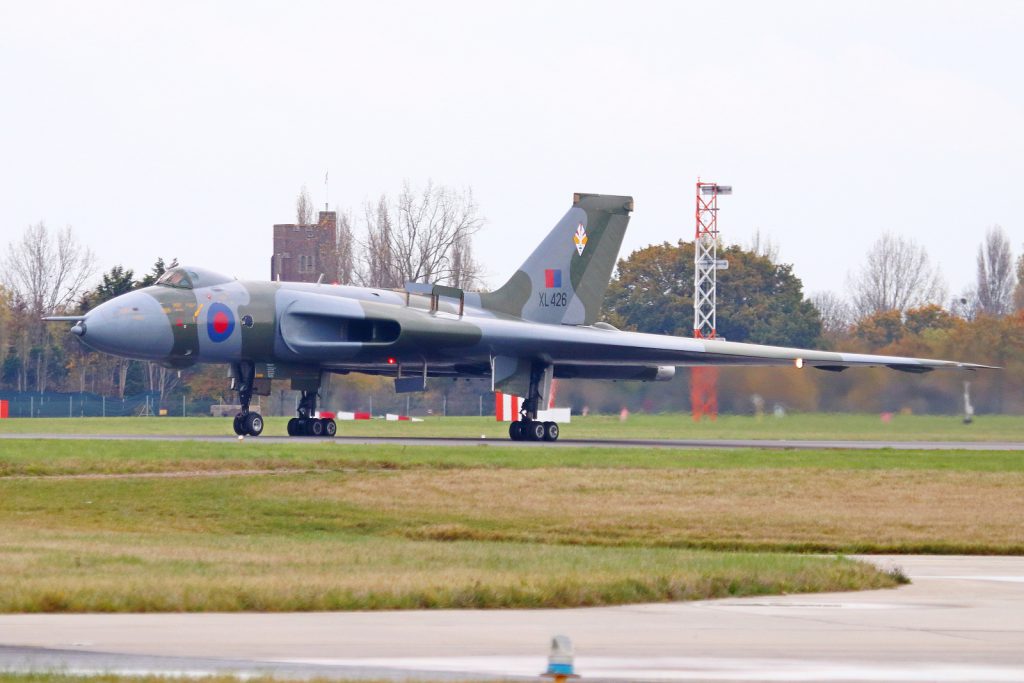
The Vulcan XL426 was in active service with the RAF from 1962 to 1986, and during her service, set an unofficial world record for the fastest flight from Canada to the UK, taking only 4 hours and 5 minutes – a record later officially beaten by Concorde.
In 1993, ownership of the XL426 was transferred to the Vulcan Restoration Trust, and although she no longer takes to the skies, XL426 is regularly showcased in events taxying on the runway at London Southend Airport and is maintained solely through donations to the Vulcan Restoration Trust.
It is from this very plane after some restoration work, that the metal from an elevon was taken, and sculpted into miniature sculptures of the Avro Vulcan for use in a special, limited edition commemorative…
The BRAND NEW Avro Vulcan XL426 Provenance Commemorative
And now, a small number of collectors have the chance to own a BRAND NEW Commemorative featuring an ACTUAL piece of the Avro Vulcan XL426…
This incredible commemorative features an original piece of the Avro Vulcan XL426, hand-sculpted into the shape of this iconic plane and expertly precision set into a deluxe SUPERSIZE 70mm commemorative.
Even without the piece of the Avro Vulcan, this commemorative is a work of engineering art in its own right. Combined with the actual piece of Avro Vulcan, it becomes a piece of aviation history…
Only 250 lucky collectors have the chance to own this special new commemorative. The last Provenance commemorative that features a piece of Hawker Hurricane SOLD OUT in a matter of weeks. Click here to secure your Avro Vulcan XL426 Provenance Commemorative before they are SOLD OUT!
The iconic train known around the world – The Flying Scotsman
First constructed in 1923, the LNER Class A3 4472 became a flagship locomotive for the London and North Eastern Railway (LNER), and due to its notable service on the London to Edinburgh Flying Scotsman line, the train itself became known as The Flying Scotsman.
Over its long career, The Flying Scotsman set two world records; one for being the first steam locomotive to be officially authenticated at reaching 100mph, and then setting a record for the longest non-stop run by a steam locomotive when it ran 422 miles whilst in Australia.
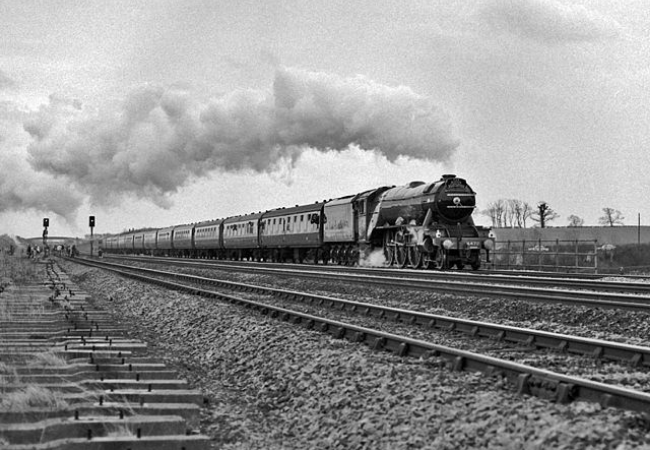
The Flying Scotsman was retired from active service in 1963 after covering over 2.08 million miles, and was bought by several private owners, before finally being purchased by the National Railway Museum in 2004 for £2.3 million.
After a couple of years of failed uses as a charter train due to various mechanical issues, in 2006 The Flying Scotsman entered the National Railway Museum’s workshops to begin a large scale overhaul and restoration project.
The complete restoration of the locomotive took ten years to complete – during which time the A4 boiler was replaced with a spare A3 boiler which matched up to the locomotive’s original specifications. Other issues were encountered during the restoration, including misaligned frames, and cracking throughout the frame and cylinders.
Finally, in January of 2016, The Flying Scotsman’s restoration was fully completed and returned to active service wearing its Wartime Black livery.
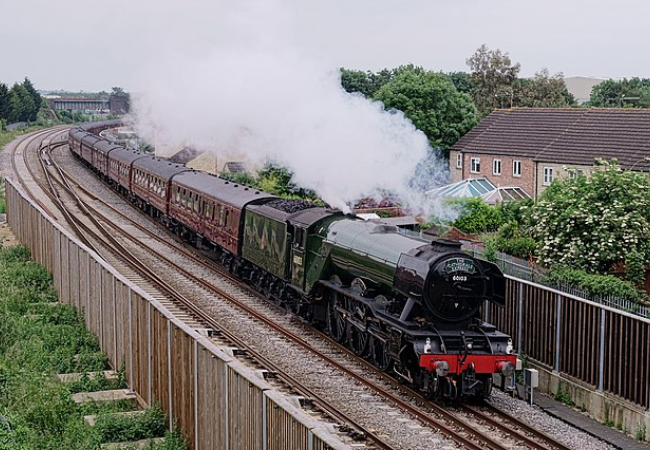
As part of this restoration, the left trailing front bogie axle-boxes had to be replaced. These axle boxes were each stamped with ‘103’ – the number The Flying Scotsman ran under in post-war years, and as such would’ve covered hundreds of thousands of miles whilst fitted to the famous locomotive.
These axle boxes were then melted down into ingots, before being commissioned by The Westminster Collection to be cast into miniature sculptures of The Flying Scotsman for use in a special commemorative issue…
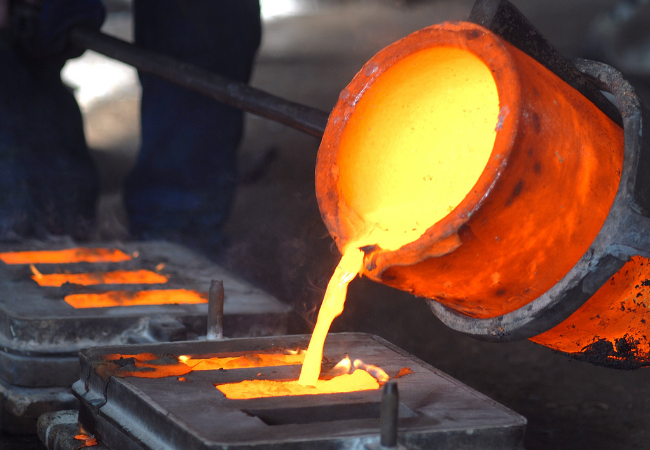
The BRAND NEW Flying Scotsman Provenance Commemorative
And now, a small number of collectors have the chance to own a BRAND NEW Commemorative featuring an ACTUAL piece of The Flying Scotsman…
This incredible commemorative features an original piece of The Flying Scotsman, cast into the shape of the iconic locomotive and meticulously precision set into a deluxe SUPERSIZE 70mm commemorative.
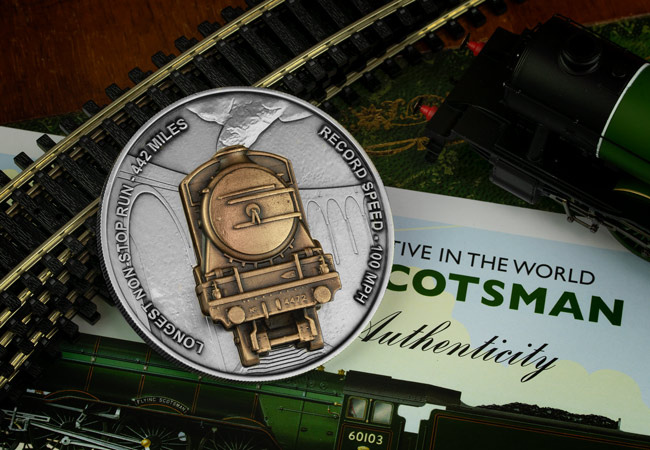
Even without the piece of The Flying Scotsman, this commemorative is a work of engineering art in its own right. Combined with the original piece of Flying Scotsman, it becomes a piece of locomotive history…
Only 250 lucky collectors have the chance to own this special new commemorative. The last Provenance commemorative that featured a piece of Hawker Hurricane SOLD OUT in a matter of weeks. Click here to secure your Flying Scotsman Provenance Commemorative while you can!

